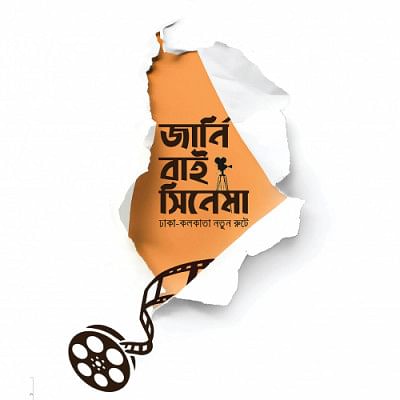A journey with 50 Bangla films

Three years ago, I remember watching Noor Imran Mithu's film Komola Rocket (2018) at Bashundhara City with two of my friends. I miss those days when going to a theatre was a normal occasion. While I was enjoying some popcorn and chocolate ice cream, my eyes were fixed on the screen in the darkness. I was wondering how the cinematographer and crew had used such narrow spaces inside a boat to take the perfect shots, and how the scriptwriter had managed to create a feeling of sympathy in the audience's heart for a wealthy garment factory owner whose greed was responsible for the death of hundreds of his workers. I agree with the ideas of independent filmmaker Faridul Ahasan Shourav, who writes in his new book, Journey by Cinema (Gronthik Prokashon, 2021), that one of the biggest strengths of Komola Rocket was its ending and the way we do not know whether the launch finally reached its destination safely, because the director left the meaning of the last scene open to the audience's interpretation.
In Journey by Cinema: Dhaka-Kolkata Notun Route E, writer, photographer, and film activist Faridul Ahasan Shourav analyses 50 Bangla films made in Bangladesh and India, including independent productions like Live from Dhaka, Jonaki, and Amalkatha, thrillers like Udhao and Khoj, science fiction films like Professor Shanku o El Dorado, experimental films like Blackout and Nirbaak, and selections from the political genre like Herbert, Meghe Dhaka Tara, and so on. In its range and research on art films and filmmaking, the book covers extensive ground on the technical aspects of the field. Shourav talks about and offers criticism on screenplay, acting, direction, cinematography, art direction, sound design, editing, make-up, and music composition, all from his unique point of view. His language is natural and accessible, making it easy for readers to connect to the many stories he recounts—this is marred only by his expounding of details that may count as spoilers for some of the films.
The positives, though, offset its negatives. In one such highlight, Shourav, revealing the 'behind the scenes' anecdotes from Nirbaak, shares how director Srijeet Mukherjee's creative impulses had been inspired by Salvador Dali's anthropomorphic paintings. These backstories were the most fascinating part of the book for me, difficult as it is to find reliable resources for 'behind the scenes' stories related to Bangla films, amidst the pool of Hollywood- and Bollywood-centric content on YouTube.
Regarding the credo of the author, it is evident in his writing that Shourav is reluctant to strongly criticise art films in the book. He rather picks through a heap of Bangla movies so that the reader can easily select good films to watch, and engage in conversations on interpretation, over a comforting cup of tea or some rice.
Nujhat Jahan Khan is a media professional.

 For all latest news, follow The Daily Star's Google News channel.
For all latest news, follow The Daily Star's Google News channel. 



Comments